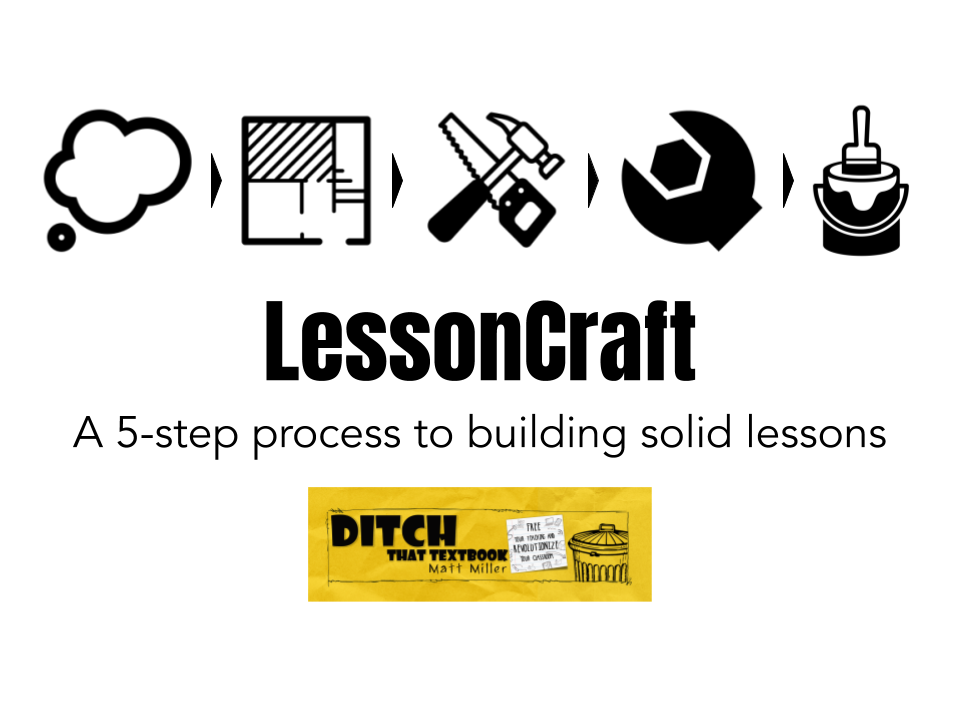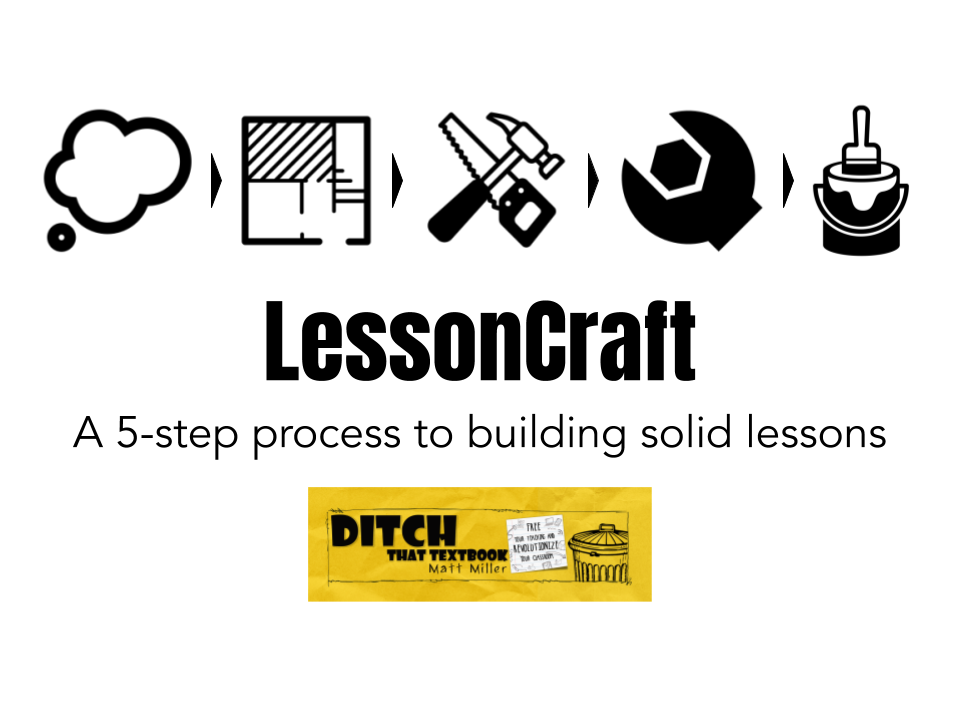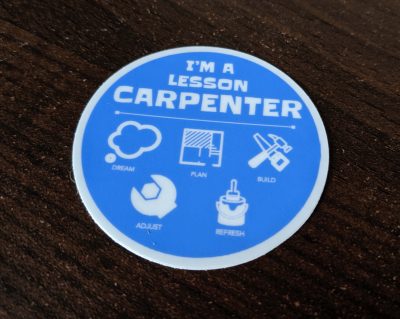

Teaching is like art. Creating great lessons is a craft. Here’s a process for crafting great lessons.
Woodworking has been a hobby of mine since I was young. I got it from my dad, who got it from his dad. We’re a kind of lineage of woodworkers.
I started with Pinewood Derby cars in Cub Scouts. My dad helped me trim down the wood block to become a car, add weight in the right spots, and finish it with paint and decals.
Now, as an adult, I still love to make things out of wood whenever I can — shelves, benches, even a deck off the back of the house.
The deeper I’ve gotten into woodworking — and into education — I’ve started to see similarities between how woodworkers craft something out of wood and how teachers craft great lessons.
I really believe teaching is a craft. It’s art. And when we study how other artists do their work, we can learn about our own art — in the form of teaching.
You’d think that a woodworker starts with wood and hammer and nails, right? A woodworker actually starts with a dream. She envisions something that doesn’t exist in this world — or at least in her house! — and has a passion to bring it to life. A woodworker can build virtually anything out of wood. She’s only limited by her imagination.
Teachers need to dream, too. We need to dream about the classroom we want to create. The cool lessons that will engage both our students AND us. Are you dreaming? And if you are, are you taking your dreams seriously?
You have your dream. Now it’s time to start making some plans. This is the exciting part. Anything is possible! You want to make sure, though, that all of the pieces fit together nicely. I plan my woodworking projects out with my dad because he sees things differently than I do. His lifetime of experience saves us from mistakes and makes our projects better.
Planning can be isolating and lonely. Are you planning alone? Identify your fellow lesson architects — the ones you can plan your creations with. If you’re lucky, they’re next door or down the hall from you. Or you may find them online, part of thriving educator communities on Twitter and other social media.
(Want to get started on Twitter but don’t know how? Check out our Beginner’s Guide to Twitter for Teachers, a free ebook … no signup necessary!)
You have your dream. Your plan is in place. Now it’s time to get to work and step into the lesson builder’s workshop. If you step into the lesson builder’s workshop …
Even our best-laid plans aren’t executed to perfection. There will be bumps in the road. Mistakes. Flaws in our plans. They’re not failures. They’re just opportunities to adjust.
Even great woodworkers have to adjust. Clint Harp, the woodworker from the famous HGTV show Fixer Upper wrote about this in his book, Handcrafted.
As it goes with furniture, so it goes with life. It’s a process. Sometimes, you just have to pick up the pieces from the splinters and sawdust and improvise. — Clint Harp
When we dream up and create a new lesson, it’s easy to feel disappointed. Reality never quite reaches our lofty expectations. That doesn’t mean your work has failed. It just means that you’re human — and it’s an opportunity to adjust. When you create new lessons, I think we should plan for this part. Plan to be disappointed — so that it doesn’t catch us by surprise and so we don’t give up.
The last part of a woodworking project is called “finishing.” It’s where we put a coat or two of paint or some stain and varnish on to make our creation look its best. I’ve always thought it’s funny that we call it finishing. Our creations — in wood or in lessons — are never a finished product.
We can refinish and refresh rough lessons that we’re not thrilled with. But we can also refresh lessons that we really love. It’s an opportunity to take them from good to great.
This is LessonCraft. This is the process.
Our students benefit; they learn more deeply and enjoy it.
But we benefit, too … we unleash our full potential and experience joy in teaching lessons we love.
Let’s become master crafters in the art of designing great lessons.

The whole lesson builder’s process on a sticker! We use Sticker Mule to order custom logo stickers. If you want to order stickers, you can get a $10 credit on your first order!
Disclaimer: We received store credit in exchange for mentioning Sticker Mule in this post … so we can give away more stickers for free to teachers at conferences and events!
For notifications of new Ditch That Textbook content and helpful links:
Interested in having Matt present at your event or school? Contact him by e-mail!
Matt is scheduled to present at the following upcoming events:
[getnoticed-event-table scope=”upcoming” max=”15″ expanding=”false”]

Session expired
Please log in again. The login page will open in a new tab. After logging in you can close it and return to this page.